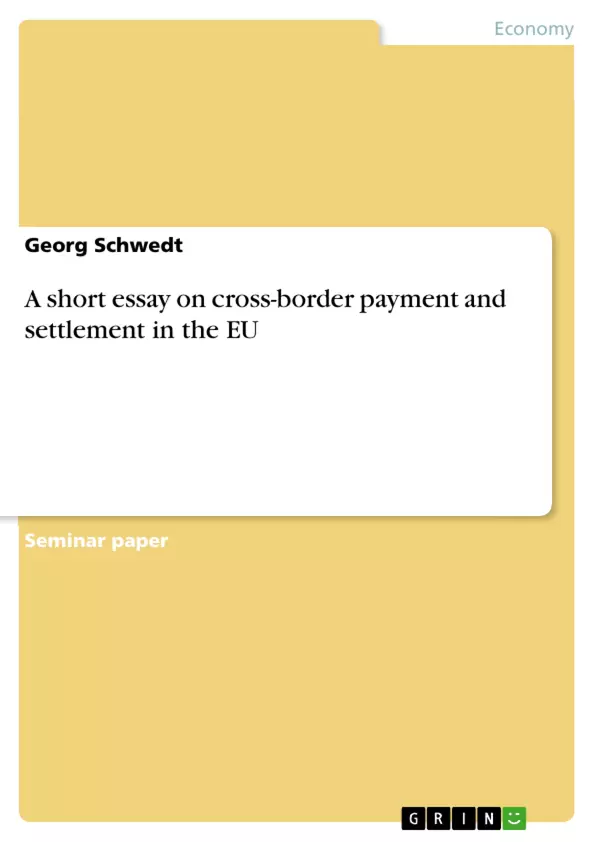According to Art. 56 of the Treaty of the European Communities (EC Treaty) the Common European Market enjoys since its establishment in the year 1993 free movement of capital. Since 1999 the monetary union between 12 EU-states is in operation, since 2002 the euro exists as money.
This essay examines the sector of payment and settlement systems within the Common Market, their situation and development towards the common goal of free movement and discover the obstacles. The situation and development assessment is divided into the individual payments sector and the bulk payments sector with.
Finally the striking question is: Why does it take so long to integrate the payment sector?
Inhaltsverzeichnis (Table of Contents)
- Introduction
- The Single European Payment Area (SEPA)
- The individual payment sector
- The bulk payments sector
- Why does harmonization take so long?
- Conclusion
- References
Zielsetzung und Themenschwerpunkte (Objectives and Key Themes)
This essay examines the situation and development of payment and settlement systems within the Common Market towards the common goal of free movement of capital. It investigates the obstacles hindering this integration and analyzes the individual payments sector and the bulk payments sector. The essay also delves into the question of why the harmonization of the payment sector takes so long.
- The development of a Single European Payment Area (SEPA)
- The integration of payment cultures and systems across EU Member States
- The role of the European Payments Council (EPC) in establishing SEPA
- The impact of harmonization on cross-border payments efficiency and cost
- The challenges and obstacles to achieving a fully integrated European payment market
Zusammenfassung der Kapitel (Chapter Summaries)
- Introduction: This chapter provides an overview of the essay's focus, highlighting the importance of free movement of capital in the European Union and examining the situation and development of payment and settlement systems in the Common Market.
- The Single European Payment Area (SEPA): This chapter discusses the SEPA initiative, launched by the European Banking Association (EBA) in 2002, aimed at overcoming fragmentation in European payment cultures and creating a unified system for cross-border payments. It outlines the strategic goal of making cross-border payments as efficient as domestic ones and explores the three phases of SEPA implementation, including the role of the European Payments Council (EPC) and the introduction of STP standards.
- The individual payment sector: This chapter focuses on the individual payment sector, characterized by large-value transfers, often by central banks and large companies. It examines the existing systems for processing such payments, including TARGET and EURO1, highlighting their strengths and weaknesses, and the importance of speed and reliability for this type of payment.
Schlüsselwörter (Keywords)
This essay explores the development of cross-border payment and settlement systems in the European Union, focusing on the Single European Payment Area (SEPA) initiative, harmonization efforts, the individual and bulk payments sectors, TARGET and EURO1 systems, STP standards, the European Payments Council (EPC), and the challenges and obstacles to achieving a fully integrated European payment market.
- Quote paper
- Georg Schwedt (Author), 2004, A short essay on cross-border payment and settlement in the EU, Munich, GRIN Verlag, https://www.grin.com/document/54540



